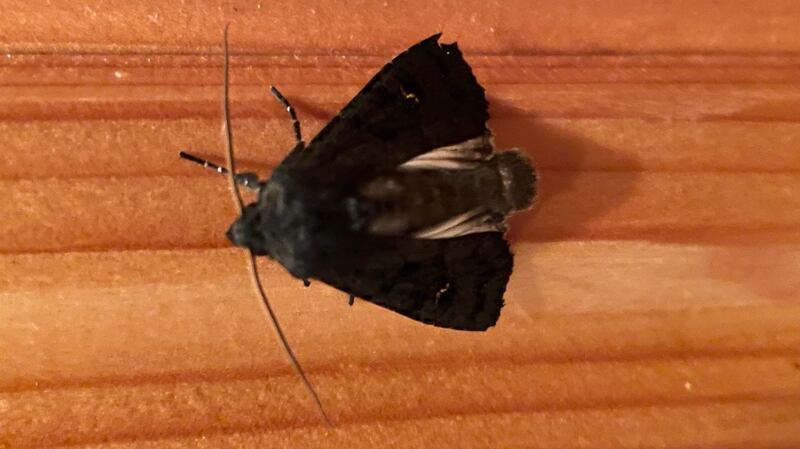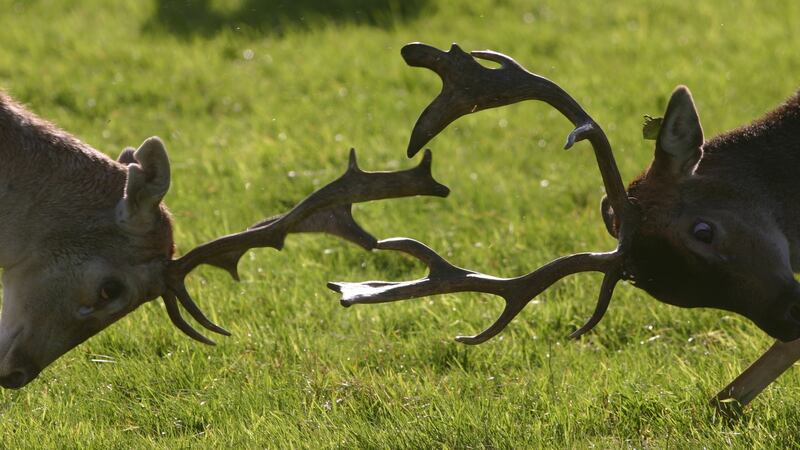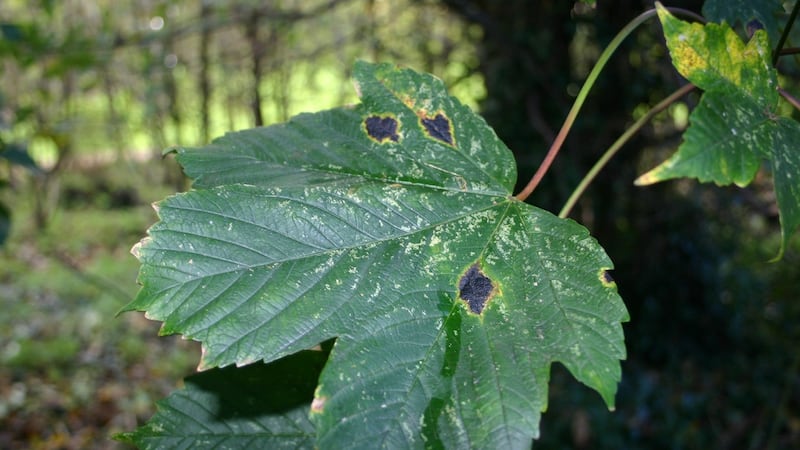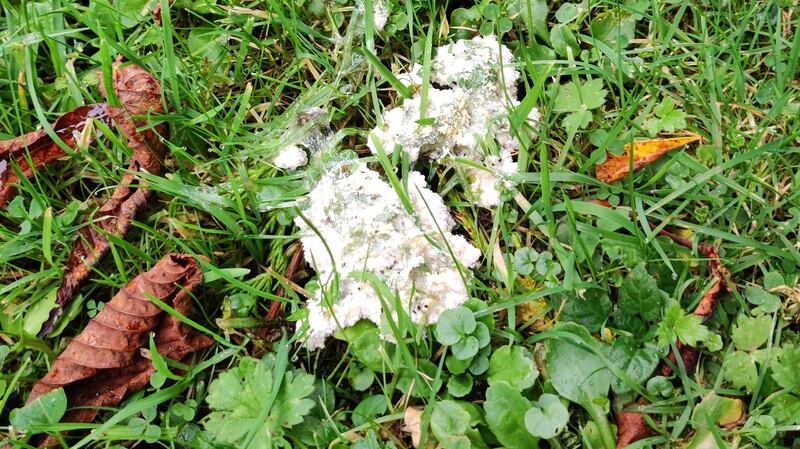What is the bird that was murdered by a sparrowhawk in my south Dublin urban garden last weekend? – Archie McInnes
It is (was) a collared dove, identified here by its thin dark beak. These doves first spread here in 1959 and are common and widespread now. It breeds from February to October and has the most boring, monotonous (to our ears, anyway) three-note call.

This came in to our house at Caherdaniel, Co Kerry. – David McConnell
It is the black rustic moth, which has silvery underwings. It flies in September and October in open grassy areas, gardens and woodlands. Its brown caterpillars feed on clovers, dandelions and docks, so keep those wildflower meadows going.

I found this guy on Killiney beach yesterday. – Evelyn McGarry
It is the lesser octopus, which is red-brown on top and white below. Its body arms bear only one row of suckers. This one was washed up by the tide, as it lives in deeper waters.

I got this picture of fallow deer stags in the Phoenix Park. – Mary Prendergast
'Tis the season ... Fallow deer have a harem system and the winner takes all. The males fight very aggressively for the privilege.

What causes these black spots on sycamore leaves? – Toirdealbhach O'Connor
These spots are caused by the tar-spot fungus, which can only grow where the air is clean, making them biological indicators of good air quality. They do little harm to the sycamore itself.

This weird fungus was growing in my garden in Ballycastle, Co Antrim. Loads of varied mushrooms but never this before. – Michael McEntee
This goes by the delightful name of dog sick slime mould. It is a huge collection of single-celled organisms called protozoa. Fittingly for Halloween, it can creep along the ground devouring bacteria. It releases black spores when mature, then collapses and dies.
Have you a nature query, observation or photo you would like to share with The Irish Times? Submit it, with location of the image, via irishtimes.com/eyeonnature









